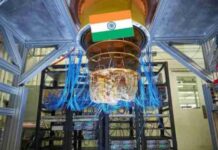Heart failure is an increasingly common global health concern, impacting millions and presenting significant challenges for healthcare systems and providers. This condition is marked by the heart’s inability to effectively pump blood, leading to severe symptoms and diminished quality of life for patients. With rising incidences of risk factors such as diabetes and hypertension, the urgency for enhanced management strategies for heart failure is more pressing than ever. In response, advanced treatments like Left Ventricular Assist Devices (LVADs) and heart transplantation have become viable options in recent years.
Understanding Heart Failure and its Impact
Heart failure is a chronic medical condition that can be defined as the inability of the heart to pump enough blood to meet the body’s needs. However, it should not be understood as an abrupt cessation of cardiac activity; rather, it is a gradual condition that arises from a variety of underlying reasons over time. As a result, it is crucial to comprehend the causes, kinds, symptoms, diagnosis, and management techniques of heart failure.
What are LVADs, and how do these devices operate?
An LVAD, or Left Ventricular Assist Device, is a mechanical pump implanted in the chest to help a weakened heart pump blood throughout the body. It’s attached to the heart’s left ventricle and the aorta, taking over the heart’s pumping function. An LVAD is a battery-operated device attached to the heart’s left ventricle and the aorta, and it takes over the pumping action of the heart by taking blood from the left ventricle of the heart and pumping it through a mechanical pump that is implanted in the chest. LVADs are powered by batteries and come with a controller for monitoring and adjustments. By assisting the heart in pumping blood effectively, LVADs help in improving circulation and relieving symptoms of heart failure and additionally serve as a bridge to transplantation or as a long-term therapy. In recent years, LVADs have emerged as a viable option for treating people suffering from advanced heart failure.
Benefits of undergoing LVAD therapy
- Enhancing physical capacity and independence
The increase in exercise tolerance and functional capacity is one of the most significant advantages of LVAD therapy. Many patients report a significant improvement in symptoms such as fatigue and dyspnea, which allows them to participate in activities that they were previously unable to do. Consequently, patients, after regaining their physical capacity, feel more independent and lead more satisfying lives because they can travel, engage in hobbies, and spend more time with their loved ones.
- Decrease in Hospitalizations and Improved Survival Rate
It has been observed that LVADs increase survival rates and lower hospitalization risk in patients with advanced heart failure. It helps stabilize patients’ conditions by increasing cardiac output and minimizing symptoms, which lessens the need for repeated hospitalizations and emergency procedures. Furthermore, patients’ lives can be further prolonged by the improved support that LVADs offer in reversing the damaging effects of heart failure on other essential organs.
- Psychosocial Benefits
LVADs have major psychosocial benefits in addition to physical ones, like enhancing patients’ general quality of life and emotional health. Regaining independence and functional capacity helps people feel more empowered and in control, which lessens the overwhelming feelings that are frequently connected to long-term illnesses. Furthermore, engaging in rehabilitation programs and establishing connections with support groups can improve social interaction and offer crucial emotional support, thus fostering resilience and mental well-being.
Challenges and limitations
Although LVAD therapy has brought significant changes to the treatment process for severe heart failure, there are still certain challenges and possible issues. Device malfunction, hemorrhage, thrombosis, infection, and other consequences can happen, and these require careful management and close observation. Furthermore, the cost of long-term care and LVAD implantation presents difficulties for patients and healthcare systems alike. Despite these difficulties, patients who are properly chosen for LVAD therapy have shown notable increases in survival, functional ability, and quality of life.













